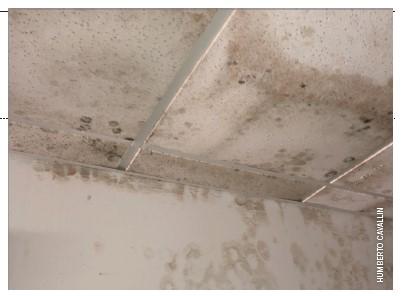
Exterior Finish
Mold and Rot Brief Guide to Mold Moisture and the Home
While there are many types of mold, none of them grow without water or moisture. Indoors, mold may begin growing when mold spores land on wet surfaces. There are many ways water can enter a home or building and cause high enough surface relative humidity to result in mold growth, but very briefly, some culprits are:
- Rainwater and groundwater intrusion
- Water leakage in the envelope
- Leaky piping, plumbing fixture, and/or appliances
- Results of cold or humid weather.
Mold and bacteria growths are odorous, unsightly, and a cause of wood rot, but they can also cause asthma and allergic reactions in many individuals, and there are cases linking certain airborne fungi to cancer, birth defects, immune system suppression, “sick building syndrome”, and tissue poisoning. Excess moisture, particularly in the air, also encourages dust mites and cockroaches, and their droppings can cause asthma and allergic reactions in many people. Meanwhile, increased use of insecticides can trigger additional allergic reactions.
Moisture can cause building degradation in many ways, from wet crawlspaces to leaking roofs, possibly leading to mold growth, rot, or insect infestation.
Moisture control is essential to mold prevention and control.
- Clean and repair roof gutters consistently.
- Ensure that the ground slopes away from the building foundation so that water does not enter or collect around the foundation.
- Keep air conditioning drip pans clean and make sure the drain lines are unobstructed and flowing properly.
- Ideally, keep indoor humidity below 60%.
- If condensation or moisture is collecting on windows, walls, or pipes, this could be an indication of high humidity. Dry the wet surface immediately and reduce the moisture/water source.
If mold is found in the home:
- Wearing the appropriate protective gear, clean up the mold promptly AND fix the moisture problem.
- Dry water-damaged areas and items completely within 24-48 hours to prevent mold growth and adjust the moisture control strategy immediately.
If there is extensive water damage, and/or mold growth covers more than 10 square feet, consult the U.S. Environmental Protection Agency (EPA) guide titled Mold Remediation in Schools and Commercial Buildings at here. If the HVAC system may be contaminated (for example, there is mold near the intake to the system), consult EPA’s Should You Have the Air Ducts in Your Home Cleaned? here.
If a contractor (or other professional service provider) is doing the cleanup, make sure the contractor has experience cleaning up mold and check references